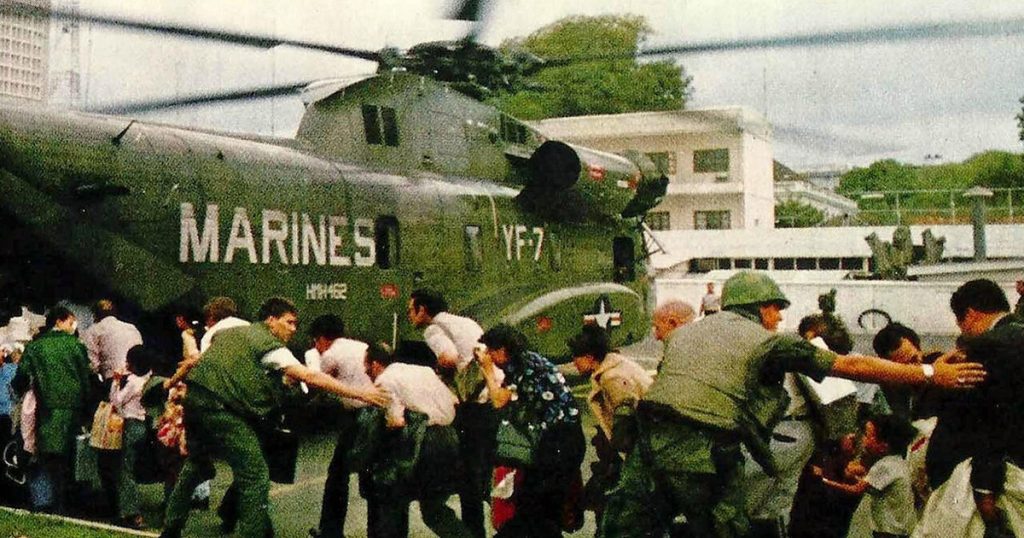The final moments of the Vietnam War marked a traumatic and chaotic evacuation of American and South Vietnamese personnel as North Vietnamese forces advanced on Saigon. Amidst the turmoil, accounts from military officials and journalists paint a poignant picture of desperation, hope, and the heart-wrenching decisions made under pressure. The events led to significant repercussions for those involved and solidified the tragedy of a war that deeply affected the nations involved.
| Article Subheadings |
|---|
| 1) The Rush to Evacuate |
| 2) Chaos at Tan Son Nhut Airport |
| 3) The Last Days of the U.S. Embassy |
| 4) The Final Helicopter Evacuations |
| 5) Consequences of the Evacuations |
The Rush to Evacuate
In the waning days of the Vietnam War, panic permeated the ranks of South Vietnamese soldiers as the North Vietnamese army advanced relentlessly towards Saigon. Reports indicate that military personnel aboard a Pan Am airliner witnessed harrowing scenes, wherein soldiers desperately swarmed the aircraft, abandoning their families to secure their own escape.
“They left their wives, their children, their aged parents on the runway,”
remarked a CBS correspondent, highlighting the urgency of individual survival amidst the chaos. The urgency of the evacuation efforts was underscored by the cries for help and the overwhelming sense of desperation echoing through the crowds.
Chaos at Tan Son Nhut Airport
Tan Son Nhut Airport became a focal point for evacuation efforts as throngs of Vietnamese and American citizens flooded the airstrip. Fears intensified as enemy artillery struck the vicinity, tragically killing two U.S. Marines stationed at the airport. Retired Marine Gerry Berry recalled how the North Vietnamese forces bombed the area, rendering essential access routes unusable. This chaotic atmosphere culminated in the declaration of Operation Frequent Wind, an unprecedented helicopter evacuation endeavor ordered by U.S. Ambassador Graham Martin. During this operation, an estimated 7,000 personnel were safely evacuated from the country.
The Last Days of the U.S. Embassy
As the situation deteriorated, the U.S. Embassy in Saigon emerged as both a sanctuary and a site of chaos. Numerous desperate individuals besieged the embassy grounds in hopes of securing transportation to safety. Marine guards at the embassy faced gut-wrenching decisions as frantic civilians implored them for assistance, echoing the grim reality of the situation.
“There were women at the gate just saying, ‘Please, just take my baby,'”
recounted Marine guard Jerome Thomas. The situation grew increasingly dire as the crowd surged, leading to crushes and potentially tragic consequences.
The Final Helicopter Evacuations
In the midst of this harrowing evacuation, the ambiance within the embassy became fraught with uncertainty. Berry recalls landing in the embassy’s parking lot, only to find that Ambassador Martin had not yet prepared for evacuation. As military personnel conducted rescue missions, they were confronted with the heartbreaking reality that not everyone could be saved. The final helicopter missions were desperately executed against a backdrop of gunfire and artillery shelling. Marine Sergeant Juan Valdez, who experienced the last hours of the operation, remembers the fervent debates among his peers regarding whether to fight or surrender. This sentiment highlighted the shared resolve among U.S. troops to protect their own.
Consequences of the Evacuations
In the early morning hours of April 30, 1975, the last remnants of the American military presence in Vietnam culminated in a final, frenetic effort to evacuate personnel. Amid the backdrop of advancing enemy forces, the last helicopters returned to escort dozens of American personnel and a small number of Vietnamese allies. The emotional gravity of this moment was palpable, with survivors reflecting on the weight of their decisions.
“I felt horrible,”
Valdez recounted. Despite a promise of safety, military orders dictated an end to the operations, leaving countless individuals abandoned. This marked the culmination of a haunting chapter in both American and Vietnamese history and underscored the tragic reality of war.
| No. | Key Points |
|---|---|
| 1 | The final stages of the Vietnam War saw chaotic evacuations from Saigon. |
| 2 | Thousands of South Vietnamese and American personnel sought refuge at Tan Son Nhut Airport and the U.S. Embassy. |
| 3 | Operation Frequent Wind was initiated to facilitate a massive helicopter evacuation. |
| 4 | Emotional accounts highlight harrowing decisions faced by military personnel during the evacuation. |
| 5 | The final helicopter evacuations marked a somber end to U.S. involvement in Vietnam. |
Summary
The evacuation from Saigon not only symbolized the end of America’s involvement in the Vietnam War but also highlighted the profound human suffering and moral complexities involved in such a withdrawal. The poignant narratives of those who experienced this chaotic exit reveal the deep scars left on both individuals and nations. As history recounts these events, it serves as a reminder of the sacrifices made and the consequences of warfare.
Frequently Asked Questions
Question: What was Operation Frequent Wind?
Operation Frequent Wind was the final evacuation effort of American personnel and vulnerable Vietnamese allies from Saigon in April 1975, marking the largest helicopter evacuation in history.
Question: Who were the last Americans to evacuate from Vietnam?
The last Americans to evacuate from Vietnam primarily included diplomatic and military personnel, with the final groups being extracted from the U.S. Embassy shortly before the fall of Saigon.
Question: What emotional impact did the evacuation have on servicemen involved?
Many servicemen felt immense guilt and sorrow over leaving behind Vietnamese allies and civilians. Several described their desperation and emotional turmoil as they navigated impossible choices during the evacuation.


